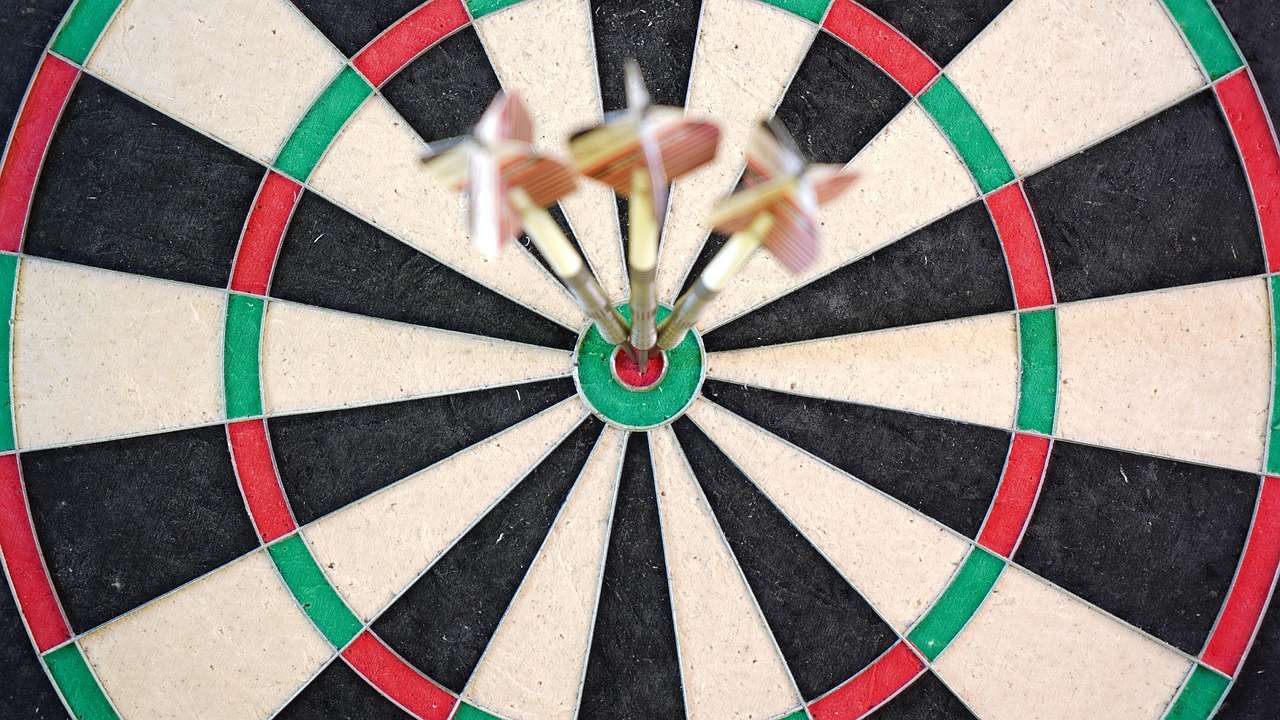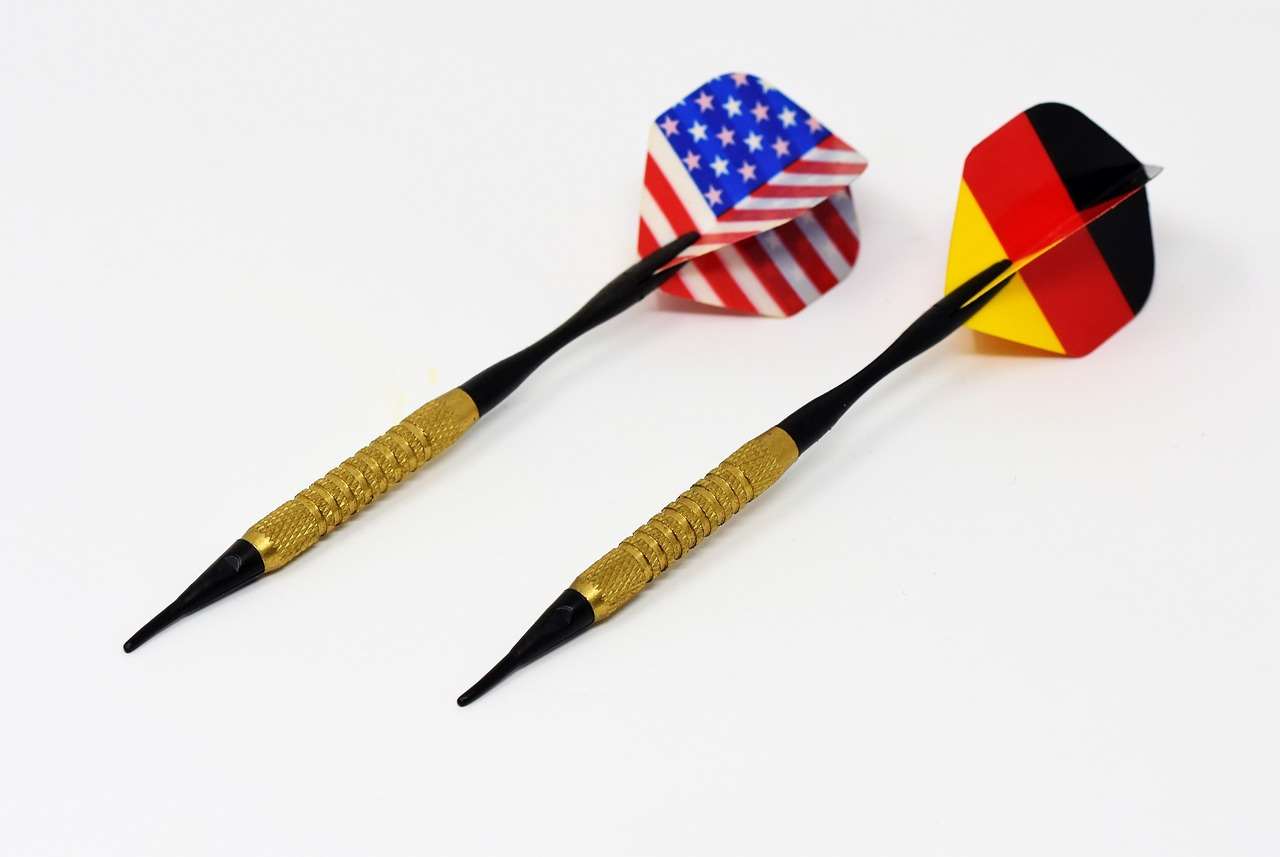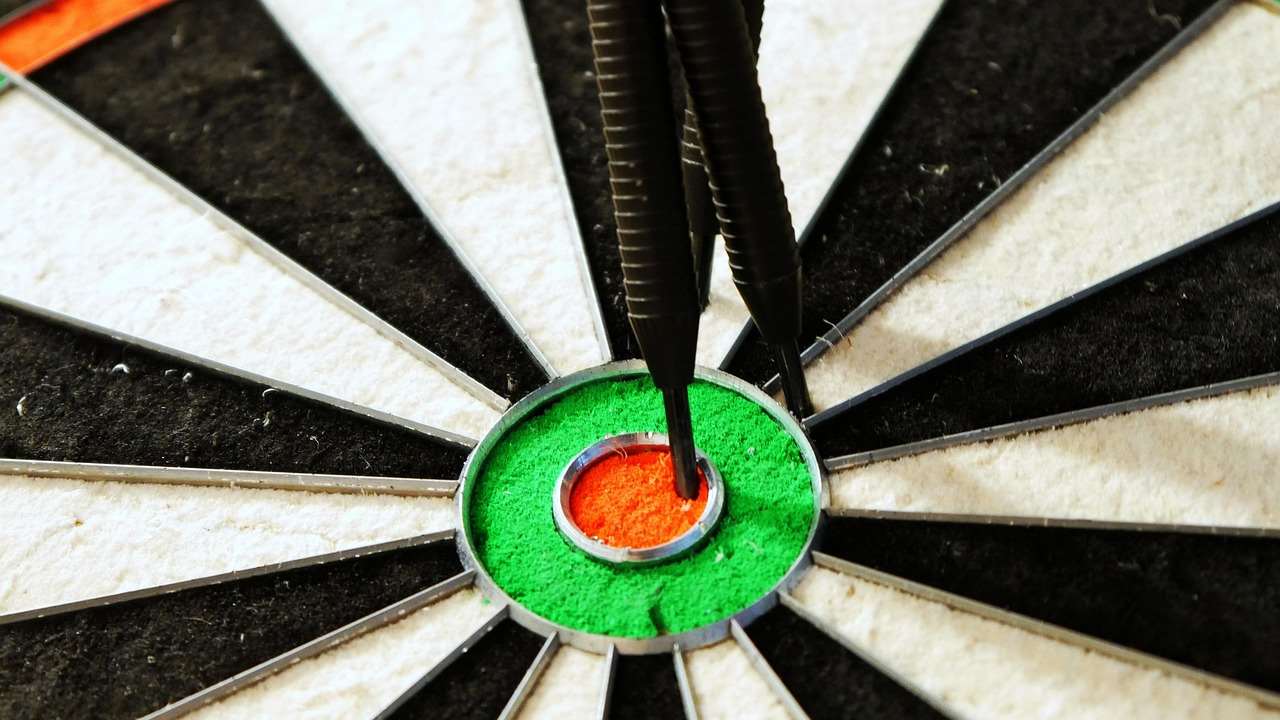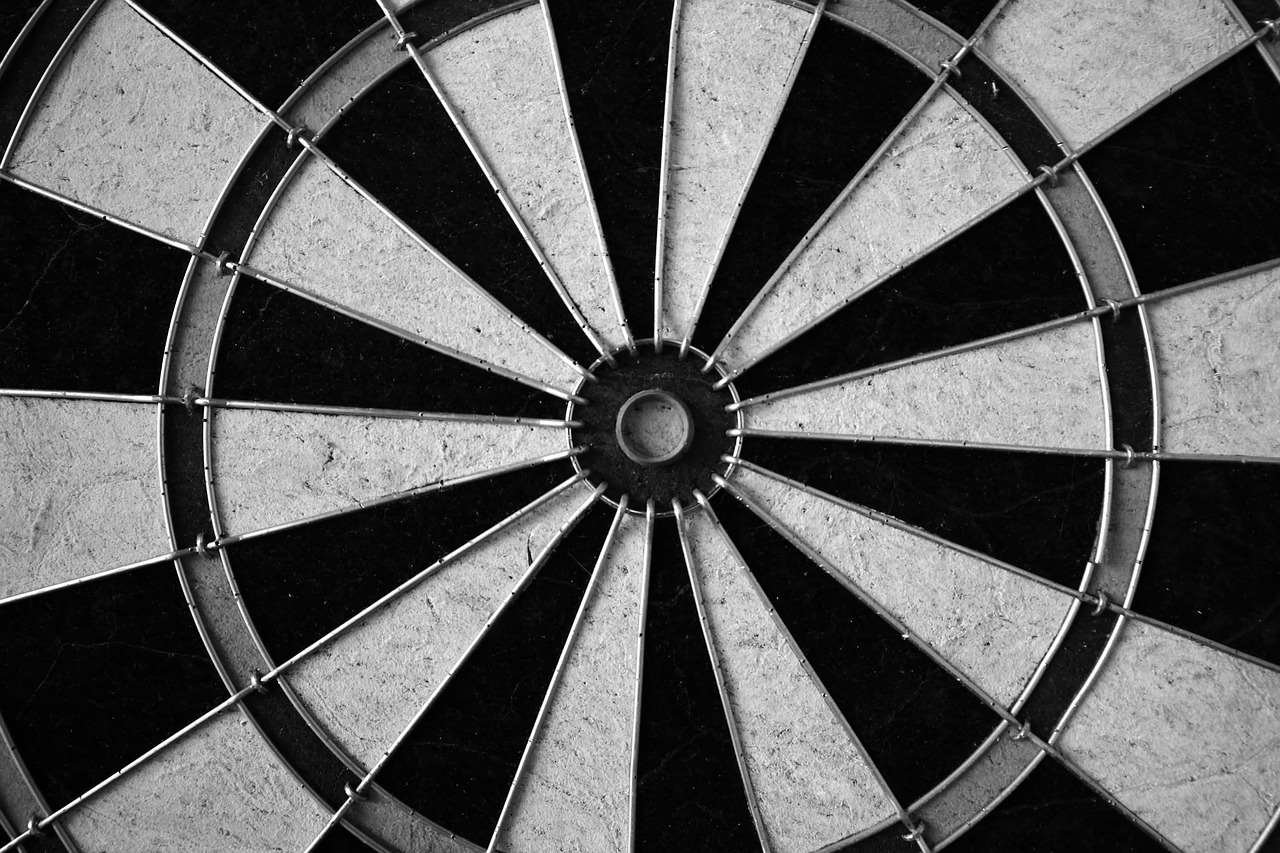Finding that your dartboard feels too hard to hit consistently? The most common reason is poor technique. This article will help you diagnose why your darts aren’t sticking where you intend, offering practical solutions to improve your game. We’ll explore common mistakes, equipment considerations, and practice drills to help you conquer that frustrating “dartboard too hard” feeling.
⚠️ Still Using Pen & Paper (or a Chalkboard)?! ⚠️
Step into the future! The Dart Counter App handles all the scoring, suggests checkouts, and tracks your stats automatically. It's easier than you think!
Try the Smart Dart Counter App FREE!Ready for an upgrade? Click above!
First and foremost, remember that mastering darts takes time and dedication. Don’t get discouraged if you feel like the dartboard is too hard at first; consistent practice and a focus on technique will yield significant improvements. Let’s break down some of the key elements contributing to this common problem.
Understanding Why the Dartboard Feels Too Hard
Many factors contribute to the feeling that a dartboard is too hard. It’s rarely about the dartboard itself but rather about the player’s approach and technique. Let’s delve into some of the most common culprits:
- Poor Grip: A tense or incorrect grip is a major culprit. A relaxed, consistent grip is essential for accuracy. Learn more about proper dart grip techniques to improve your game significantly.
- Inconsistent Throwing Motion: A jerky or inconsistent throwing motion can send your darts wildly off target. A smooth, fluid motion is key to achieving consistent results. Think of it like a pendulum—smooth and controlled.
- Incorrect Stance and Posture: Your stance and posture play a huge role in your accuracy. Proper foot placement and body alignment help ensure a consistent release point and trajectory.
- Incorrect Aim: Focusing on the intended target is crucial. Many players make the mistake of focusing on the dart itself, leading to aiming errors. Practice focusing on your target before, during and after throwing.
- Equipment Issues: While less frequent, unsuitable darts or a poorly mounted dartboard can significantly affect your performance. Consider the weight and shape of your darts and ensure your dartboard is securely mounted at the correct height.

Let’s address each of these issues individually, providing practical solutions to help you overcome the challenge of a dartboard too hard feeling. Remember, even small adjustments can make a significant difference.
Improving Your Grip: The Foundation of Accuracy
Finding the Right Grip
The grip is arguably the most crucial aspect of dart throwing. A tight, tense grip leads to inconsistent throws, making the dartboard too hard to hit. Experiment with different grips until you find one that feels comfortable and natural, allowing for a smooth and controlled release. There’s no one-size-fits-all solution; what works for one player might not work for another.

Many beginners find the “finger grip” most suitable, holding the dart between the thumb, index, and middle fingers. However, other grips such as the “forefinger grip” may be more comfortable for some players. The key is to find a grip that allows your fingers to release the dart naturally and smoothly.
Relaxation Techniques
Tension is the enemy of accuracy. Before each throw, consciously relax your grip, arms, and shoulders. Deep breaths can help alleviate tension and promote a smoother, more controlled throw. Consider practicing relaxation techniques such as mindfulness or meditation to improve your focus and reduce tension on the oche. A relaxed approach will drastically reduce the feeling that the dartboard is too hard.
Refining Your Throwing Motion: Smoothness and Consistency
The Throwing Motion
Many players struggle with inconsistency in their throw, leading to the perception that the dartboard is too hard. Consistency comes from practice and repetition. A smooth, rhythmic motion, mimicking a pendulum swing, is ideal. The arm should move in a continuous arc from the back, through your center, and towards the board. The throwing motion should feel natural and fluid.
Practicing Consistency
To master the throwing motion, practice throwing darts with a focus on maintaining the same rhythm and arc with each throw. Start with slow throws, gradually increasing speed as your consistency improves. Aim to eliminate any jerky movements or sudden acceleration during the throw. Practice often and focus on feeling the consistency of your throw rather than obsessing over scores immediately.
Analyzing Your Throw
If you’re still finding the dartboard too hard, consider video recording yourself. Observing your form helps identify any inconsistencies or flaws in your technique. Even minor adjustments can significantly improve your accuracy and make the game more enjoyable. You can compare this to other players to identify weaknesses.
Perfecting Your Stance and Posture: Alignment for Accuracy
Your stance and posture significantly influence the dartboard’s apparent difficulty. A correct stance provides a stable base and a consistent release point. This should help to give you a consistent throw. Stand comfortably with your feet shoulder-width apart, keeping your body relaxed but alert. Your weight should be balanced evenly on both feet. A slightly bent knee position is recommended for stability.
Your posture also impacts your throwing motion. Stand tall with a straight back, keeping your head still and focusing on the target. Avoid hunching over or leaning too far forward. Maintaining proper posture helps promote a smooth, controlled throw and reduces the likelihood of variations in your trajectory. A proper stance and posture are vital for reducing the difficulty of the dartboard.
Consider using a proper oche to maintain consistency in your stance. Getting the correct oche is important and consider the cost involved.
Improving Your Aim: Focus on the Target, Not the Dart
Many players make the mistake of focusing on their dart rather than the target itself. While keeping an eye on your dart for a proper release is important, your primary focus should always be on the intended segment. Imagine the bullseye and your dart travelling directly towards it, maintaining this focus throughout the throw. Consider practicing visualization techniques to enhance focus.
Consider also that not all nine darts games are created equal, and you may need to adjust your aiming strategy to accommodate different rules or target setups.
Practice aiming drills, focusing on hitting specific segments consistently. This way you’ll be training your eye and your mind together, as well as refining your motion. If your darts are still wildly off target, reassess your stance, grip and throw and begin again.
Addressing Equipment Issues: Darts and Dartboard Setup
While the majority of dart-related issues stem from technique, inadequate equipment can also contribute to a dartboard too hard experience. The correct choice of darts, in terms of weight, size, and material, affects the throw significantly. Experiment with different weights to find what feels comfortable for you. Too heavy or too light will impact your consistency and may make the dartboard seem more difficult than it actually is.

Ensure your dartboard is securely mounted on a wall at the correct height. A wobbly dartboard is frustrating and inaccurate, while incorrect height can distort your throw and impact accuracy. Check regularly for loose screws, etc. A badly placed or damaged dartboard creates an inaccurate game. A properly mounted dartboard is a necessity for improving your game.
The type of dartboard also makes a difference. While bristle dartboards are generally considered the standard, sisal dartboards are becoming increasingly popular. Choose the material and style you find most suitable. This could be a significant factor that has impacted your game, and using the wrong type of board may make the dartboard seem too hard to hit.
Practice Drills for Improvement
Consistent practice is key to improving your dart-throwing skills and overcoming the feeling that the dartboard is too hard. Start with simple drills, focusing on accuracy over speed. Work on your technique, aiming for consistency in your grip, throw, and posture. Gradually increase the difficulty of the drills, and focus on the consistency of your approach.
- Bullseye Focus: Practice hitting the bullseye repeatedly, aiming for consistency over quantity.
- Segment Targeting: Practice hitting specific segments of the board, working your way around the board until every segment is consistently hit.
- Checkout Practice: Practice various checkouts to improve your finishing skills under pressure. Check out some of the highest checkouts in history for inspiration.
- Rhythm and Timing Drills: Practice your throw with a metronome or other timing device to develop a consistent throwing rhythm.

Remember to track your progress, noting any improvements or areas needing attention. Regular practice combined with a focus on proper technique will significantly increase your accuracy and enjoyment of the game.
Conclusion: Mastering the Dartboard
Overcoming the “dartboard too hard” feeling is achievable with dedication and attention to detail. By addressing aspects such as grip, throwing motion, stance, aim, and equipment, you can significantly improve your accuracy. Remember that consistency is key – practice regularly using the drills outlined above, focus on your technique, and enjoy the process. With dedication and practice, you’ll transform from a frustrated player to a confident dart thrower, capable of hitting those elusive segments with ease. Remember to check out our Dart Counter App for help tracking your scores and progress! You’ve got this!
Want to learn more about the exciting world of darts? Explore our other resources on the World Championship, popular songs played at darts events and explore different dart games!
Hi, I’m Dieter, and I created Dartcounter (Dartcounterapp.com). My motivation wasn’t being a darts expert – quite the opposite! When I first started playing, I loved the game but found keeping accurate scores and tracking stats difficult and distracting.
I figured I couldn’t be the only one struggling with this. So, I decided to build a solution: an easy-to-use application that everyone, no matter their experience level, could use to manage scoring effortlessly.
My goal for Dartcounter was simple: let the app handle the numbers – the scoring, the averages, the stats, even checkout suggestions – so players could focus purely on their throw and enjoying the game. It began as a way to solve my own beginner’s problem, and I’m thrilled it has grown into a helpful tool for the wider darts community.